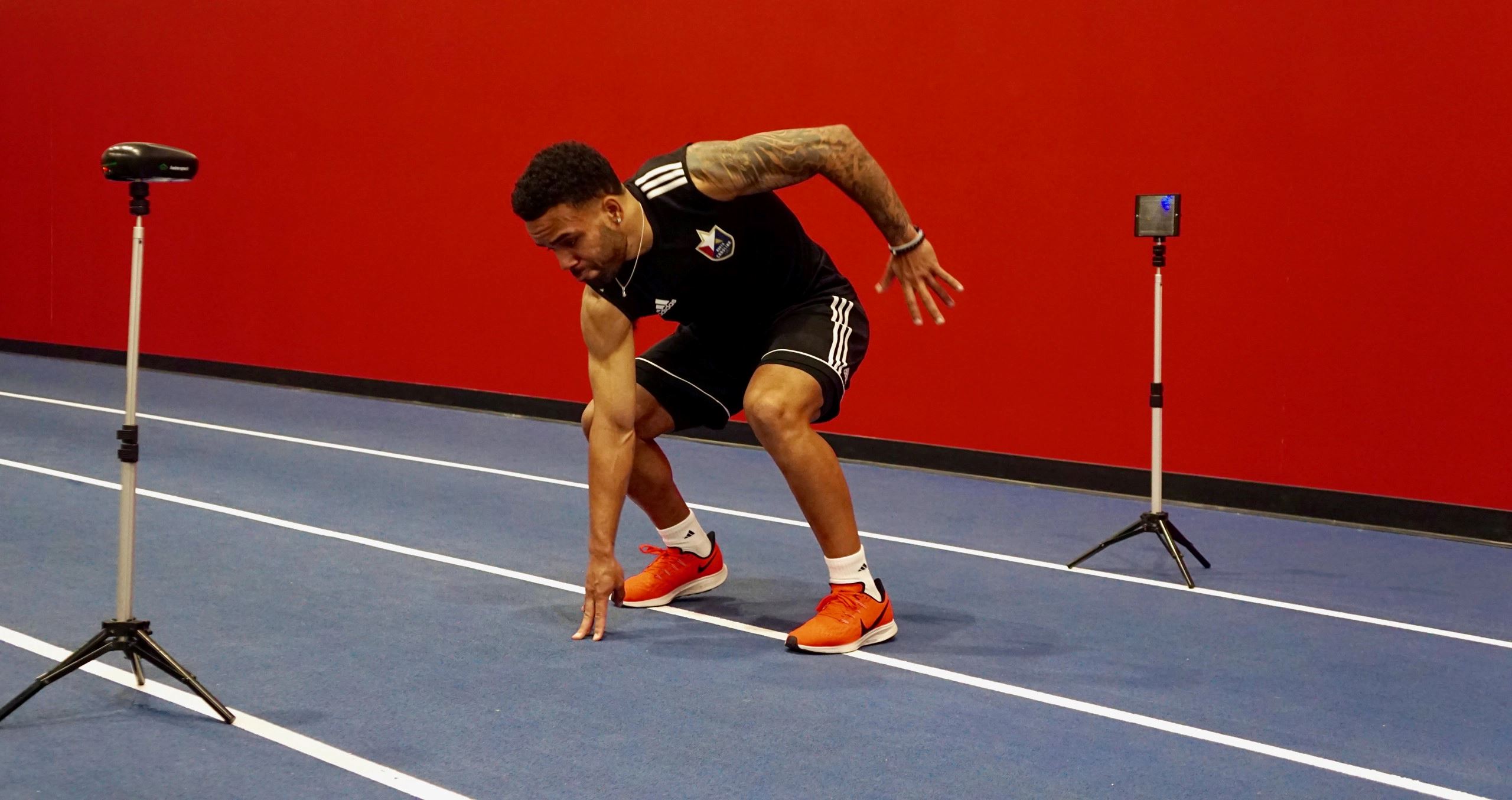Home>Misc>Featured>What Is Endurance Training And The Four Components Of Endurance Training


Featured
What Is Endurance Training And The Four Components Of Endurance Training
Modified: January 2, 2024
Looking to improve your endurance? Discover what endurance training is and understand the four key components involved. Get featured insights now!
Introduction
Endurance training is a crucial aspect of any fitness program, whether you’re a professional athlete or simply looking to improve your overall health. It focuses on improving your body’s ability to sustain prolonged physical activity by enhancing cardiovascular fitness, muscular endurance, flexibility, and mental resilience. This type of training is essential for athletes participating in endurance sports such as long-distance running, cycling, swimming, and triathlons.
Endurance training is also beneficial for individuals who want to boost their everyday stamina, effectively manage weight, reduce the risk of chronic diseases, and enhance their overall quality of life. It involves consistent, progressive workouts that challenge the body’s energy systems and build resilience.
In this article, we will delve into the four key components of endurance training: aerobic endurance, muscular endurance, flexibility training, and mental endurance. By understanding these components and incorporating them into your training routine, you can optimize your performance and achieve your fitness goals.
Definition of Endurance Training
Endurance training, also known as aerobic training or cardio training, is a form of exercise that focuses on improving the body’s ability to sustain prolonged physical activity. It involves workouts that challenge the cardiovascular system, muscular endurance, flexibility, and mental resilience.
This type of training aims to enhance the efficiency of the body’s energy systems, enabling individuals to perform physical activities for extended periods of time without fatigue or exhaustion. It involves a combination of cardiovascular exercises, strength training, and flexibility exercises.
Endurance training can be tailored to suit various fitness levels and goals. It can range from low-intensity, steady-state activities such as jogging or cycling for long durations to high-intensity interval training (HIIT) that alternates between bursts of intense activity and periods of rest.
Endurance training not only improves cardiovascular fitness but also has a positive impact on the body’s overall health. It increases lung capacity, strengthens the heart, improves blood circulation, boosts metabolism, and aids in weight management. Additionally, it promotes mental wellness by reducing stress levels and improving cognitive function.
It is important to note that endurance training should be approached gradually and progressively. Beginners should start with low-intensity workouts and gradually increase the intensity and duration over time. It is advisable to consult with a fitness professional or healthcare provider before starting any new exercise program, especially if you have any underlying health conditions.
Overall, endurance training is a fundamental element of a well-rounded fitness routine. It enhances physical performance, improves overall health, and contributes to a better quality of life. By incorporating endurance training into your workouts, you can cultivate a strong, resilient body that is capable of enduring physical challenges and enjoying an active lifestyle.
Component 1: Aerobic Endurance
Aerobic endurance is a key component of endurance training. It refers to the ability of the cardiovascular system to deliver oxygen to the working muscles efficiently during prolonged physical activity. This component primarily focuses on improving the body’s capacity to utilize oxygen and maintain a steady oxygen supply throughout the workout.
Cardiovascular exercises, such as running, cycling, swimming, or brisk walking, are the foundation of aerobic endurance training. These exercises elevate heart rate and breathing rate, stimulating the heart and lungs to work harder and efficiently deliver oxygen-rich blood to the muscles.
Regular aerobic workouts gradually increase the efficiency of the heart and lungs, leading to an increased stroke volume (the amount of blood pumped per beat) and a lower resting heart rate. This allows the body to perform physical activities for extended periods without getting overly fatigued.
To improve aerobic endurance, aim for at least 150 minutes of moderate-intensity aerobic activity or 75 minutes of vigorous-intensity aerobic activity per week. It is important to note that intensity levels vary for each individual, so it is recommended to work at a level that is challenging but manageable for you.
Additionally, incorporating interval training, where you alternate between high-intensity bursts and moderate or low-intensity recovery periods, can enhance aerobic endurance. This type of training increases the body’s ability to tolerate and recover from higher levels of intensity, enabling you to push your limits during prolonged workouts.
Other forms of aerobic exercise, such as dancing, kickboxing, or group fitness classes, can also be included in your training routine to add variety and keep you motivated.
Aerobic endurance training not only improves your cardiovascular fitness but also has numerous health benefits. It helps to lower blood pressure, reduce the risk of heart disease, manage weight, improve insulin sensitivity, and enhance overall energy levels and mood.
Remember to start gradually and progress slowly when incorporating aerobic endurance training into your routine. Listen to your body, stay hydrated, and warm up and cool down properly to prevent injury. Consistency is key when it comes to building aerobic endurance, so make it a regular part of your fitness regimen to reap the maximum benefits.
Component 2: Muscular Endurance
Muscular endurance is another crucial component of endurance training. It refers to the ability of the muscles to repeatedly exert force or resist fatigue over an extended period. This component focuses on strengthening and conditioning the muscles to endure physical activity for longer durations without becoming excessively tired.
Muscular endurance training involves exercises that target specific muscle groups and require them to repeatedly contract against resistance. These exercises can include bodyweight exercises, weightlifting, circuit training, or using resistance bands.
When you engage in muscular endurance training, your muscles adapt by becoming more efficient in utilizing energy and producing the necessary force. This leads to improved endurance and the ability to sustain physical activities for longer periods.
It is important to perform exercises that target different muscle groups, such as the legs, arms, back, and core, to achieve overall muscular endurance. This will ensure that all areas of the body are strong and capable of enduring the demands of prolonged physical activity.
Incorporating high-repetition sets with lighter weights or performing bodyweight exercises with higher repetitions can help improve muscular endurance. Aim to perform 2-4 sets of an exercise with 12-20 repetitions, focusing on maintaining proper form and technique throughout.
Progressive overload is key in muscular endurance training. Gradually increase the resistance, repetitions, or duration of the exercises to continuously challenge your muscles and stimulate further adaptation.
Aside from building endurance, muscular endurance training also improves muscular strength, joint stability, and overall muscular function. It can enhance your performance in activities such as running, cycling, swimming, and weightlifting, allowing you to sustain a higher intensity for a longer duration.
Remember to include adequate rest and recovery time between workouts to allow your muscles to repair and adapt. Proper nutrition, hydration, and a balanced training program that incorporates both cardiovascular and muscular endurance exercises are essential for achieving optimal results.
By incorporating muscular endurance training into your workout routine, you will develop a strong and resilient musculoskeletal system, allowing you to excel in endurance-based activities and maintain an active, healthy lifestyle.
Component 3: Flexibility Training
Flexibility training is a vital component of endurance training that focuses on improving the range of motion and elasticity of the muscles and joints. It is essential for overall movement efficiency, injury prevention, and optimal performance in endurance activities.
Flexibility training involves specific exercises and stretches that target various muscle groups to increase their length and improve joint mobility. These exercises can include static stretching, dynamic stretching, yoga, Pilates, or mobility drills.
Regular flexibility training helps to maintain and improve joint flexibility, allowing for better movement and reducing the risk of muscle imbalances or overuse injuries. It also enhances the body’s ability to withstand the repetitive nature of endurance activities, minimizing discomfort and fatigue.
Static stretching, where you hold a stretch for a certain duration, can help increase the muscle’s length and flexibility. It is best performed after a workout or during a dedicated stretching session as part of your cool-down routine.
Dynamic stretching, on the other hand, involves active movements that gently take the muscles and joints through their full range of motion. This type of stretching is particularly beneficial for warming up the body prior to endurance training sessions, as it helps to increase blood flow and prepare the muscles for activity.
Flexibility training should target all major muscle groups, including the hamstrings, quadriceps, calves, hips, shoulders, and back. Holding each stretch for 15-30 seconds and repeating each stretch 2-4 times can help improve flexibility over time.
When performing stretches, it is important to focus on proper form and avoid bouncing or forcing movements. Stretch to the point of mild tension, but not to the point of pain or discomfort.
Incorporating activities such as yoga or Pilates into your endurance training routine can also provide additional benefits in terms of flexibility, core strength, and body awareness.
Flexibility training not only enhances performance in endurance activities but also improves posture, reduces the risk of muscle strains, and promotes overall muscle balance. It can also contribute to better relaxation and stress relief.
It is important to note that flexibility training should complement other components of endurance training, such as aerobic and muscular endurance exercises. Adopting a well-rounded approach to training will optimize your overall performance and prevent imbalances.
Remember to gradually increase the intensity and duration of your flexibility training as your range of motion improves. Regular consistency is key in maintaining and improving flexibility, so aim to incorporate stretching exercises into your routine at least 2-3 times per week.
By including flexibility training in your endurance regimen, you will enhance your overall mobility, reduce the risk of injuries, and perform at your best during endurance activities.
Component 4: Mental Endurance
Mental endurance is a crucial component of overall endurance training that focuses on developing the psychological strength and resilience needed to sustain prolonged physical activity. It involves training the mind to overcome challenges, push through fatigue, and maintain focus and motivation during long-duration workouts or competitions.
Endurance activities can be mentally demanding, requiring individuals to maintain a positive mindset and overcome mental barriers such as boredom, self-doubt, or discomfort. Mental endurance training incorporates various techniques and strategies to cultivate mental fortitude and optimize performance.
One powerful technique in mental endurance training is goal-setting. Establishing specific, measurable, achievable, relevant, and time-bound (SMART) goals can help create focus and motivation, giving a clear direction for training and competitions. Breaking down larger goals into smaller milestones can also provide a sense of progress and accomplishment.
Mental imagery, also known as visualization, is another valuable tool in mental endurance training. By vividly imagining yourself succeeding, overcoming obstacles, and persevering through challenging moments, you can enhance your confidence and mental resilience.
Positive self-talk is vital in maintaining a strong mental state during endurance activities. Replacing negative thoughts or self-doubt with positive affirmations and encouragement can help boost confidence and motivation. Practice self-encouragement and remind yourself of your capabilities and past achievements.
Learning and implementing relaxation techniques such as deep breathing, meditation, or mindfulness exercises can also contribute to mental endurance. These techniques help to reduce stress, calm the mind, and improve focus and concentration during endurance activities.
Developing mental toughness goes hand in hand with mental endurance. It involves embracing discomfort, pushing the limits, and developing resilience in the face of physical and mental challenges. Mental toughness can be developed through consistent exposure to challenging training situations, gradually pushing the boundaries of your comfort zone.
Building a support system, whether through training partners, coaches, or joining like-minded communities, can also contribute to mental endurance. Surrounding yourself with individuals who share similar goals and motivations can provide encouragement, accountability, and a sense of camaraderie.
Lastly, practicing mindfulness during your endurance activities can help you stay present in the moment and fully engage with the experience. Focus on the sensations of your body, the rhythm of your breath, and appreciating the progress and achievements along the way.
Mental endurance training is just as important as physical training when it comes to optimizing performance and achieving endurance goals. By incorporating these mental strategies and techniques into your training routine, you can develop the mental resilience and fortitude needed to excel in endurance activities.
Conclusion
Endurance training encompasses various components that work together to improve the body’s ability to sustain prolonged physical activity. By understanding and incorporating these components – aerobic endurance, muscular endurance, flexibility training, and mental endurance – into your training routine, you can optimize your performance and achieve your fitness goals.
Aerobic endurance training focuses on improving the cardiovascular system’s ability to deliver oxygen to the working muscles efficiently. Muscular endurance training targets the muscles’ ability to repeatedly exert force or resist fatigue over an extended period. Flexibility training aims to increase the range of motion and elasticity of the muscles and joints. Mental endurance training cultivates the psychological strength and resilience needed to overcome challenges and maintain focus during long-duration workouts.
Each component of endurance training plays a vital role in enhancing overall performance and ensuring optimal physical and mental well-being. By incorporating a balance of cardiovascular exercises, strength training, flexibility exercises, and mental strategies into your training regimen, you can develop a strong, resilient body and mind capable of enduring the demands of endurance activities.
Remember, endurance training should be approached gradually and progressively, taking into account individual fitness levels and goals. It is also important to listen to your body, practice proper form and technique, and prioritize rest and recovery to prevent injury and optimize adaptation.
Endurance training is not only beneficial for athletes and enthusiasts in endurance sports but also for individuals seeking to improve their everyday stamina, manage weight, reduce the risk of chronic diseases, and enhance overall quality of life. It is a lifelong journey that requires dedication, consistency, and a balanced approach to training.
So, lace up your shoes, embrace the challenge, and embark on the journey of improving your endurance. With perseverance and the integration of the key components of endurance training, you will cultivate a strong, resilient body and mind that can conquer any physical endeavor that comes your way.









